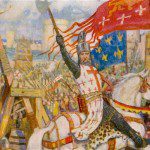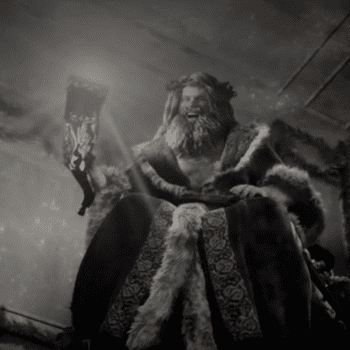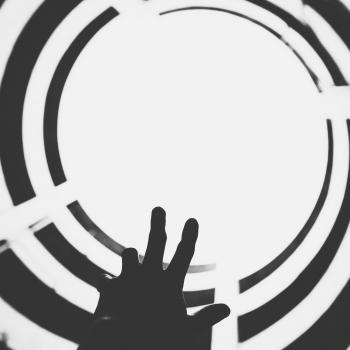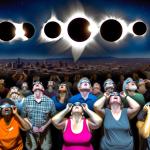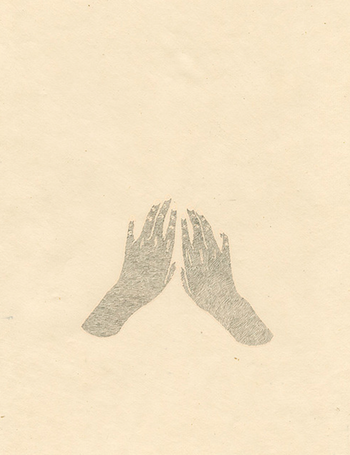
 Ours is a world immersed in sound. We are both enthused and mesmerized by the cacophonous cocoon seemingly keeping us warm and safe. In our earbuds, in our bedrooms, in our cars: sound both follows us and is produced by us with a rabid tenacity. Some of it is self-inflicted. Some of it is forced upon us. Regardless, it has become ubiquitous. Akin to many cultural assumptions, sound is believed to be good based on its pervasiveness.
Ours is a world immersed in sound. We are both enthused and mesmerized by the cacophonous cocoon seemingly keeping us warm and safe. In our earbuds, in our bedrooms, in our cars: sound both follows us and is produced by us with a rabid tenacity. Some of it is self-inflicted. Some of it is forced upon us. Regardless, it has become ubiquitous. Akin to many cultural assumptions, sound is believed to be good based on its pervasiveness.
Generally speaking, sound is a good thing. It is a medium by which we hear and connect. For most of us – if not, the overwhelming majority of us – it is the preferred medium of communication. We speak, we sing, we whistle, we cry. Sound can take on a multitude of forms as we reach out beyond ourselves to the world around us.
Yet sound can also take on a dark side. Just as it is employed as a tender whisper between mother and child, it can take on the form of the overwhelming tidal wave. Its myriad ways of taking form can quickly turn into an engulfment of information.
Sound often says, “Our name is Legion, for we are many.”
As such, sound often transmutes into noise. Once this transformation has occurred we often neglect, turn our backs upon, or ignore sound turned noise. Communication thus breaks down.
Sound also takes on a dark side as we give it power. For many of us, sound not only communicates, it simultaneously dominates. We have allowed ourselves to believe sound is the sole means of communication, the only means of connecting two individuals. When we allow ourselves to believe this, we give it the monopoly on communication. From this cultural place of power, its demands are faced without resistance. We often kowtow to sound as we concurrently assuage any other form of crossing the chasm between people.
Nowhere is this seen more often than in our usage of the spoken word. The over-reliance upon this communicative method has given – ironically – unspoken amounts of power to the ability to verbalize. Verbalization has become king and we its slaves. Influence, leadership, and authority are given to those who can speak and speak well. Automatic attention is given to those who can garner this skill as we often non-reflectively assume their words equate to unquestionable truth. This is where the trouble lies: we presume power to be a quality solely intrinsic to the verbal. This is troublesome because we have also believed the fallacious presumption that people who cannot verbalize are the opposite, namely weak.
Akin to this equation is the assumed under-girding to being verbal: the intellect. For centuries we have sought after the intellect as reason, logic, and deduction have received the highest cultural pedestal available. Even in our post-modern, post-Enlightenment (post-everything) world where knowledge is often relegated to the trivial – literally we have reduced knowledge to being most useful in trivia games – we still cling to the intellect in a multitude of ways. Jean Vanier sums it up well: “We tend to reduce being human to acquiring knowledge, power, and social status.”[1]
And so it seems the lines between power and intellect within our culture have been drawn with permanent marker. Likewise, intellectually ability and (perceived) weakness have received the same line. In some ways, this is an overstatement, but, in general, I have seen this dichotomy alive and well today. From the infantile ways of relating to those with autism to the unnecessarily Ritalin addicted co-eds killing themselves for good grades, there are cultural stories still being lived out that center on power and weakness built on intellect or its assumed lack. “There is a lack of synchronicity between our society and people with disabilities. A society that honours only the powerful, the clever, and the winners necessarily belittles the weak. It is as if to say: to be human is to be powerful.”[2] “The social stigmas around people with intellectual disabilities are strong. There is an implicit question: If someone cannot live according to the values of knowledge and power, the values of the greater society, we ask ourselves, can that person be fully human?”[3]
There is an axiom that goes something like this: Communication leads to communion. More often than I’d like to admit, I stop at communication and keep communion at bay. I often wonder how this tendency extends beyond me and is perhaps a more universal practice. Perhaps we have mistaken communication as an end itself instead of a means to the end of communion.
Furthermore, we often assume and expect not to commune with others if we believe they cannot communicate. In a world where verbalization reigns and blinds us to other forms of communication, we will not and cannot believe we can commune with others. How could we? How could we expect to communicate with those who can’t verbalize? Communion is not only believed to be impossible, but is deemed unnecessary. Why? Because – whether we are cognizant of it or not – we have fooled ourselves into thinking communication is not necessary with those who aren’t human, who aren’t powerful. If communication leads to communion and we deem communication to happen solely upon a verbal level, we won’t actually commune with those we think can’t communicate.
Having spent most of his adult life dedicated to the creation of small communities of both “abled and less-abled”[4] people, Jean Vanier has become a beacon of light for me. His insight and wisdom do not come from theory, but from feet washed, wheelchairs pushed, and meals made with and for the marginalized. As he has said himself, “Community life with men and women who have intellectual disabilities has taught me a great deal about what it means to be human.”[5] His life is a life shared and strengthened in the way of Jesus.
“She suffered from cerebral palsy and couldn’t speak, but her smile, her trust, and her shining eyes welcomed me each time I came. Through her body, she ‘spoke’ so lovingly.”[6] Vanier is speaking of the truth to the overlooked dictum about the majority of communication being nonverbal. For him, the girl he is speaking of, Ghadir, was the epitome of body language. She couldn’t speak a word, yet love was exclaimed through her smile.
As embodied creatures, we speak with our bodies long before we speak with our words. There is a communion achieved on a register only known through body language. Again, Vanier: “I have alluded to the way in which communion has the power to reveal beauty and value to another, how it frees us to be truly ourselves, but this communion demands respectful listening to the nonverbal language of the other person. I say nonverbal because, in the world of friendship and relationship, gestures normally precede the word. The word is there to confirm the gesture and give it its signification.”[7] This even more true when nonverbal language is your primary means of communicating.
Learning how one communicates despite being nonverbal isn’t like learning a language. No, it is learning how to relate to and love a person. It takes patience, persistence, and presence. For instance, one of my former special education students had a rare seizure disorder. Prior to being struck with one, he would make a series of motions with his arms. It would normally be combined with a few nuanced facial expressions. They wouldn’t always hit immediately, but you could rest assured that one was around the corner. He had no speech, so his body would tell us through these bodily acts. At first glance, you wouldn’t know what was happening. Substitutes we’d have in our room thought that perhaps he was upset. Time spent with him trained my eyes to decipher these signals and to react appropriately.
He was also a big kid. At first glance, he looked like a brute. However, if the term “gentle giant” was ever applicable to a kid, it was to him. Again, he could not speak, but his gentle grabbing, holding of your hand, and peaceful eyes spoke volumes.
The longer I made myself available to him, the more I began to learn about myself. This is what communion does. “Communion is mutual vulnerability and openness one to the other.” [8] The more I was learning to know him, the more I was learning to know myself. What did my gestures say to others, to him? How was my face exposing my true emotions? What am I conveying beyond words? I had to be real with myself that my talents, verbalization abilities and accolades meant nothing to him. As Henri Nouwen has said about his work, “The first thing that struck me when I came to live in a house with mentally handicapped people was that their liking or disliking me had absolutely nothing to do with any of he many useful things I had done until then.”[9] I could not rely on his understanding of my education and experience. My student – and many others similar to him – were breaking down the façade I had built and had come to rely upon. They were teaching me the way of vulnerability and weakness as the way of love. Their silence freed up the space where brokenness could not be covered.
And so my student(s) have taught me to look beyond the power I have attributed to words as I look for the person. Without words, they have said, “See me.” They have taught me the beauty of attentiveness. It is easy to hear words, but it is a disciplined exercise in perception to hear the body. Due to them, my eyes and heart have been opened to the paradox of weakness being the key to communion.
—
[Image by Megan Mitchell, CC via Flickr]
[1] Jean Vanier, Becoming Human (New York: Paulist Press, 1998) 78.
[2] Ibid., 46.
[3] Ibid., 77.
[4] Ibid., 45.
[5] Ibid., 6.
[6] Vanier, 37.
[7] Vanier, 99.
[8] Vanier, 28.
[9] Henri Nouwen, In the Name of Jesus: Reflections on Christian Leadership (New York: Crossroad Publishing Company, 1998) 15.

